Horse Riding in Jordan
I’ve wanted to go to Petra ever since discovering that the temple in Indiana Jones and the Last Crusade was a real place. I also like to ride a horse (or at least to attempt to), and preferably somewhere fun and scenic, and so combining the two seemed like a good idea.
So, with a booking through Far and Ride, off we went.
Day 1: Arrival and a hotel in Amman
We arrived early evening and had a driver waiting who transferred us to our hotel in Amman. All went seamlessly and we met some of the others on our tour, as well as having a decent-enough buffet meal. There was no time to see any of Amman as we were setting off to Petra at 8:30 the next morning.
Day 2: Petra
The day started with only a moderately nerve-wracking drive to Petra. There were no incidents, but I got the feeling that road markings were a new, and somewhat unwelcome, development for the Jordanian road system. We spent most of our time straddling whichever set of white lines were painted on the road, be they for a dual carriageway or to separate oncoming traffic.
The view over Wadi Musa, the town where the entrance to Petra is located.
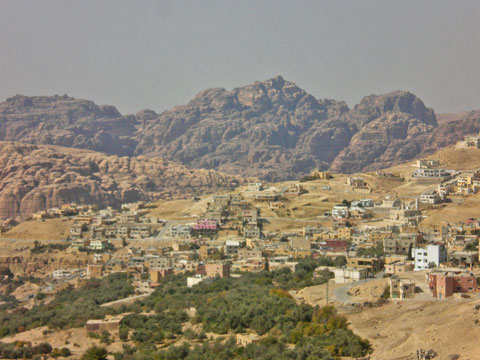
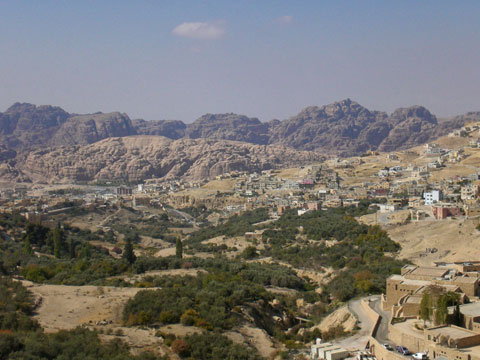
We turned out to be a group of fourteen (I think), consisting of thirteen women and me. I wasn’t expecting 50/50 on a riding holiday, but being the only guy did surprise me a bit… luckily there was no wood that needed chopping, or at the times when there was there was nothing to chop it with, so my duties weren’t too arduous.
To get our riding off to an early start some decided to take the short horseback journey down into Petra itself. I just walked, thinking that the upcoming six days in the saddle would probably be enough.
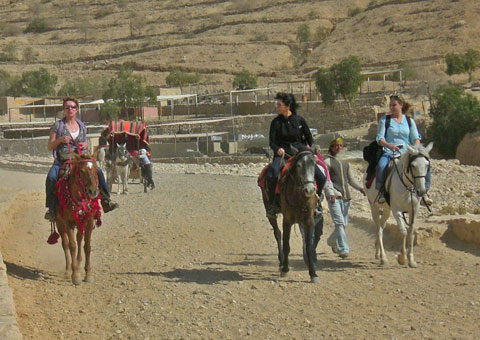
The entrance to Petra is down through a narrow canyon which not only makes it very dramatic but also served as a good defence.
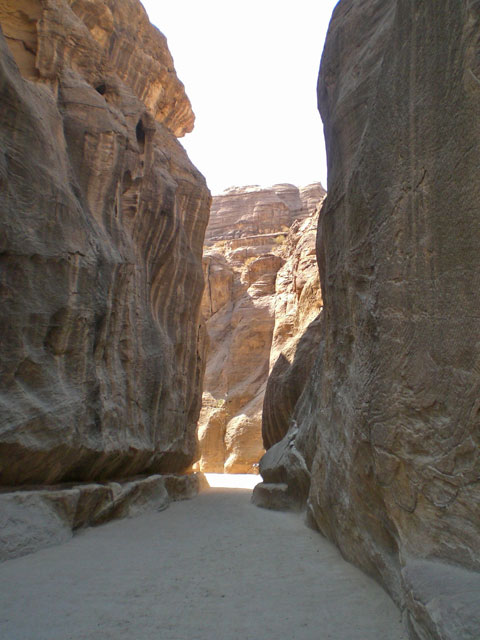
About twenty minutes walk later you come to the money shot – quite literally (okay, not quite) – which is the famous Treasury, so called because it didn’t contain any treasure. Or at least not treasure that we’d consider treasure as it was used as a tomb, albeit a rather important one at the time. It’s also one of the best preserved buildings as one of the last to be carved, by which time the Nabataeans (who lived there) had worked out that the rock had about as much solidity as butter on a summer’s day and so they’d carving the facade into a recess to protected it from the elements, which is why the rock overhangs here.
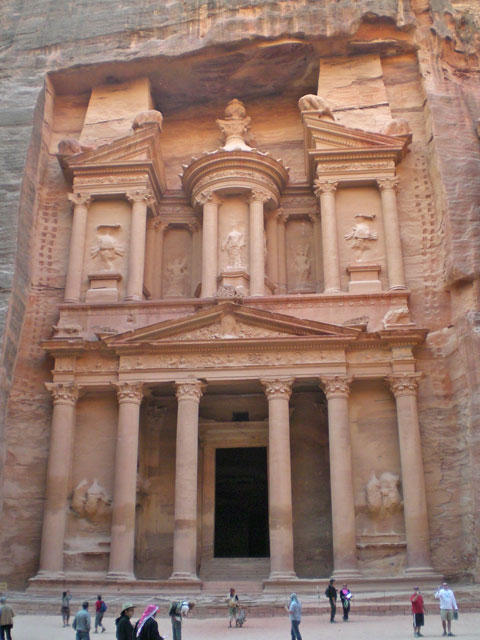
There were also a large number of smaller tombs that seemed to surround the town centre. I’m not sure I’d have liked the idea of living in the middle of a graveyard but the Nabataeans seemed to be happy with it.
Note the erosion in the aforementioned butter-hard rock.
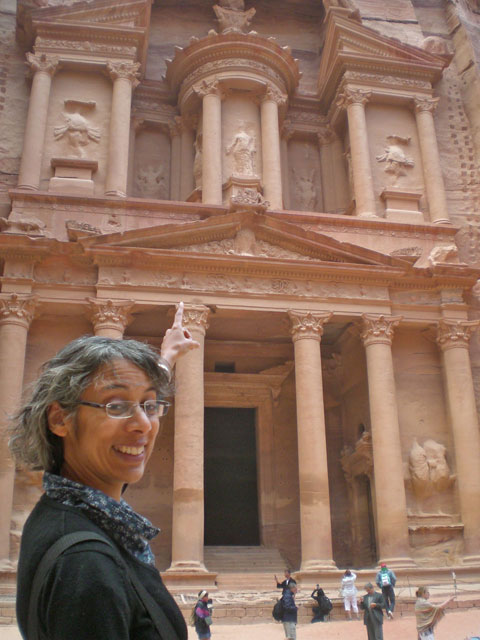
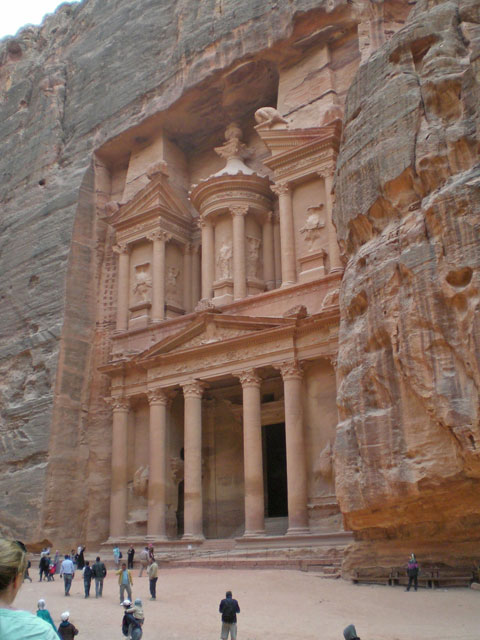
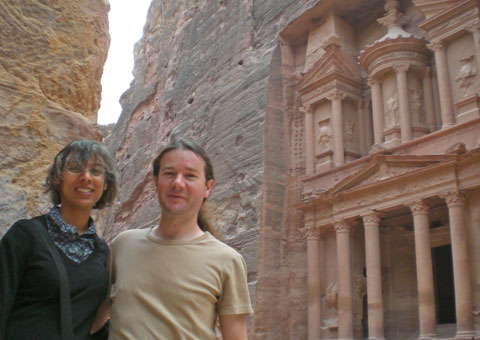
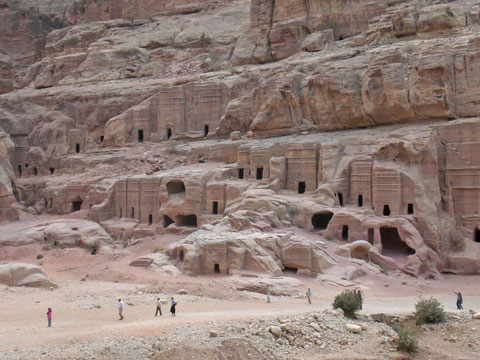
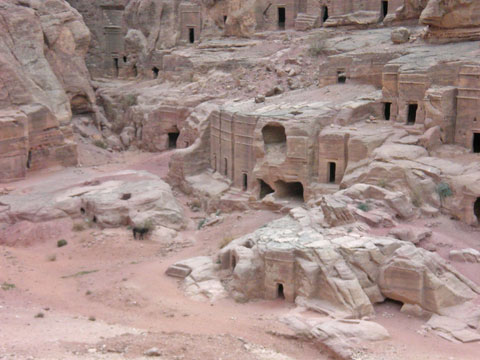
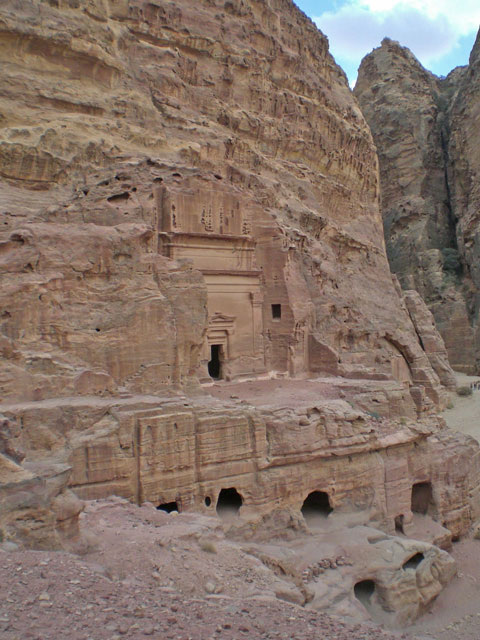
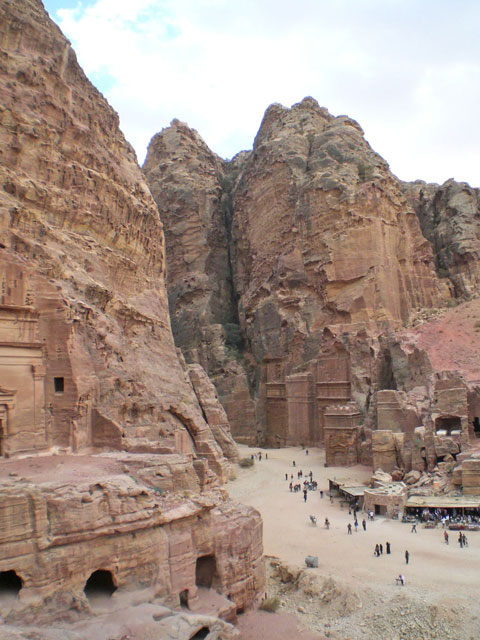
There was also an amphitheatre.
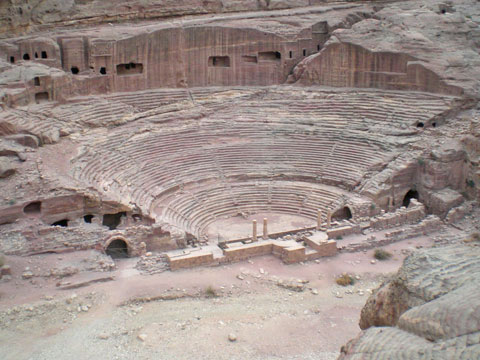
The whole place was a lot bigger than I expected, and apparently had something like thirty thousand people in it in its heyday – sometime around 100 AD, before the Romans finally managed to conquer the place.
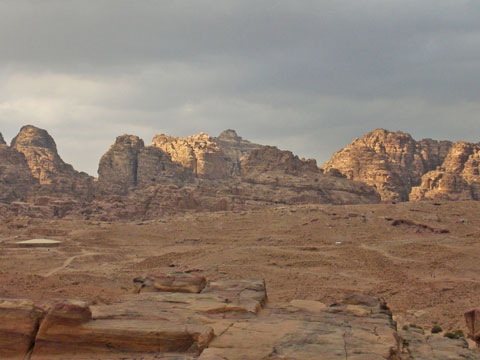
As you can see, the city was surrounded by a mountain range which is why the Romans took so long about getting in. Petra was a trade hub and was eventually broken by the Romans pushing trade routes elsewhere and then marching in once everyone inside had lost the will to put up a fight.
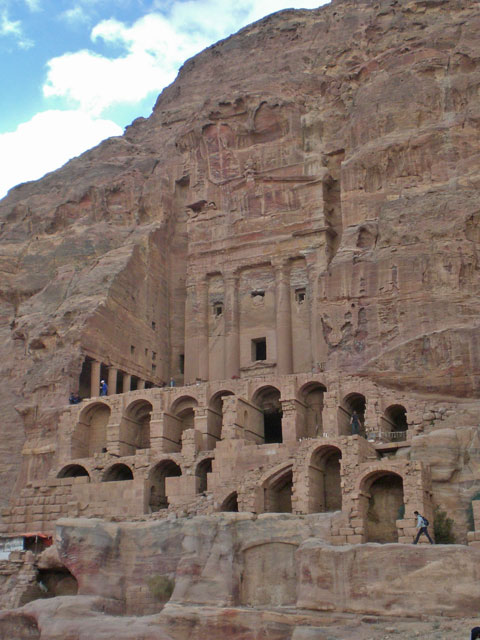
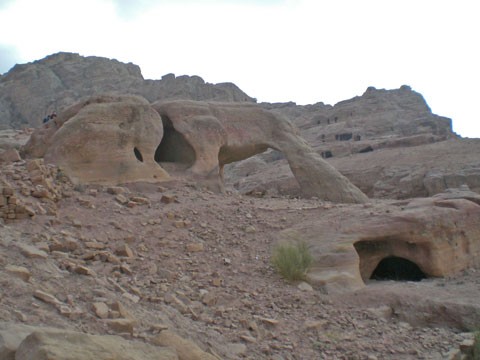
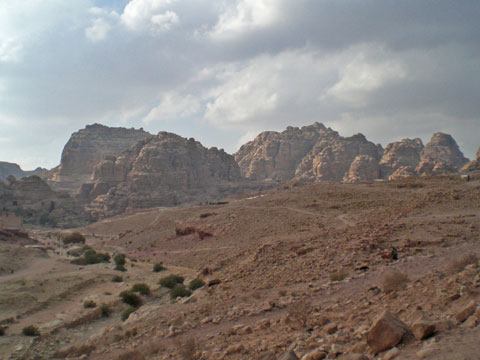
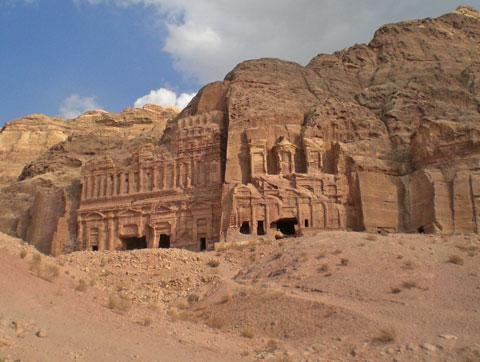
Petra also supplied my first sight of camels, outside of a zoo, so I took photos of them. Little was I to know that the desert was littered with the things, although the novelty never quite wore off anyway.
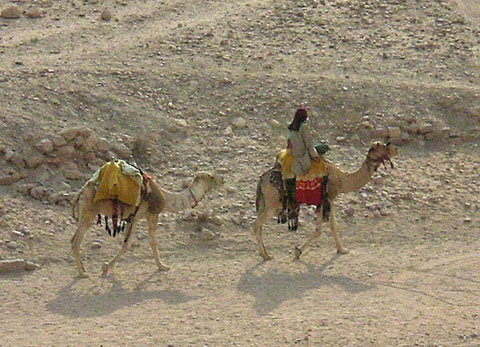
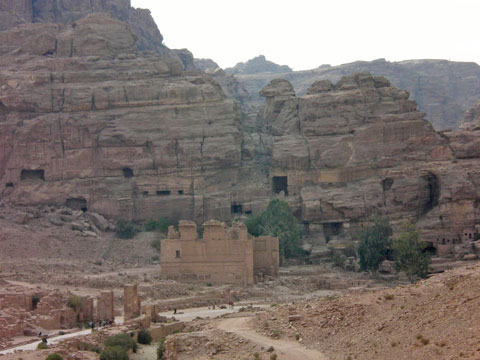
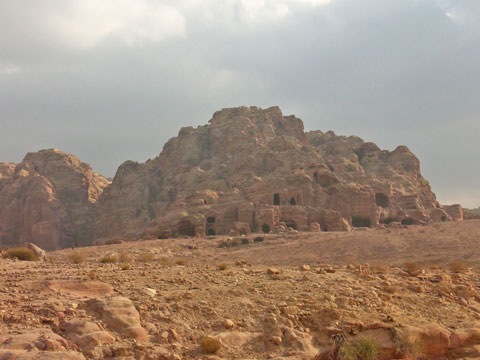
One of our group rode a camel. I abstained, mainly because I just wanted to walk back more slowly, although I have to admit to being tempted.
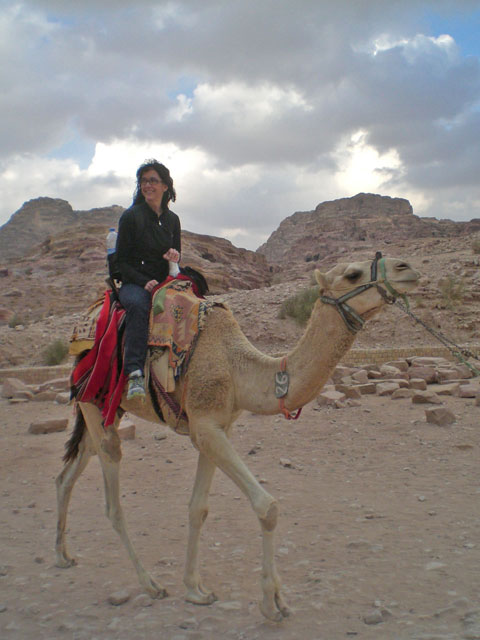
We only had an afternoon in Petra – nowhere near enough and one of the only scheduling issues we had with the entire tour (although I believe this is being reconsidered now to give a full day there).
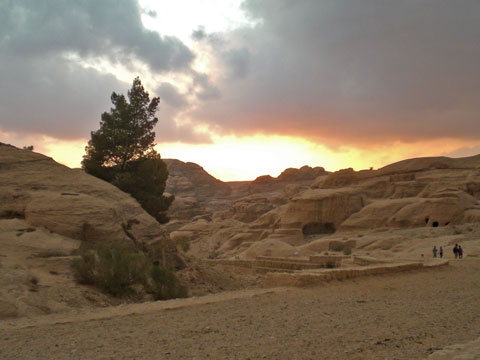
Days 3 to 8: The Wadi Rum
The next day we set off from Wadi Musa across the mountains on our trusty steeds (aka horses). We were going to be six days in the desert, without showers or running water, but well looked after by two trucks carrying our bags, the horse’s food, and the team that cooked some excellent food for us. We had hot meals twice a day and plenty of bottled water and other drinks, so to say that we were doing anything approaching the hardship of living in the desert would be a complete lie. However, we were away from the rest of civilisation and surrounded by sand, sun, wind and rock for the six days, which really is the only way to experience the place.
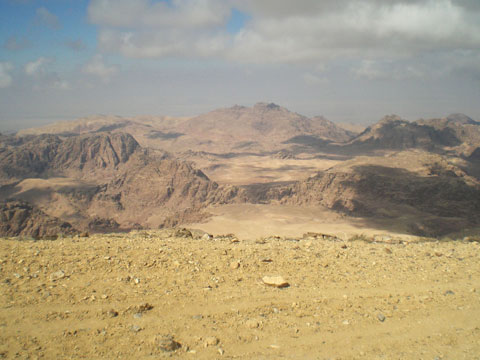
And here I am, with my trusty steed – named Rania. A very responsive yet also very calm horse that really was the perfect horse to get me started off on. (By “started off” I mean in comparison to some of the other Arabic horses. Rania was possibly the most forward-going horse I’ve ridden whilst still being easy to control.)
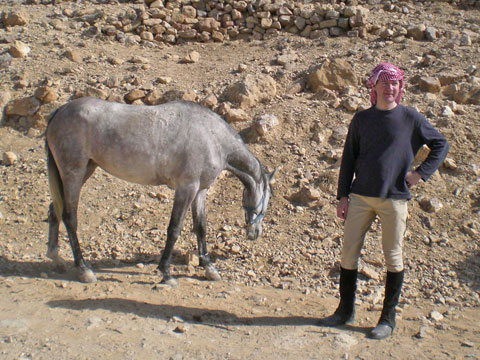
We rode for about two and a half hours each half day, with a reasonable-sized break at lunchtime when the supply truck turned up with all our bags. It looked completely overstacked at the time but after a few days I don’t think any of us thought twice about the way it was loaded.
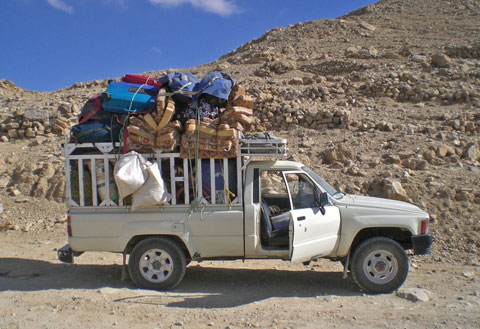
Although I’ve mentioned the food already, the quality of what we were given for lunch really was excellent. I think I enjoyed every meal we had in the desert more than any of the three or four we had in the hotel stays at the start and end of our trip.
We were responsible for tacking and untacking our horses (or horsing and dehorsing them, as I like to call it). Tacking up was something I’d never done before and with some help from others I made progress in being able to successfully shove metal into a horse’s face by the end of the week.
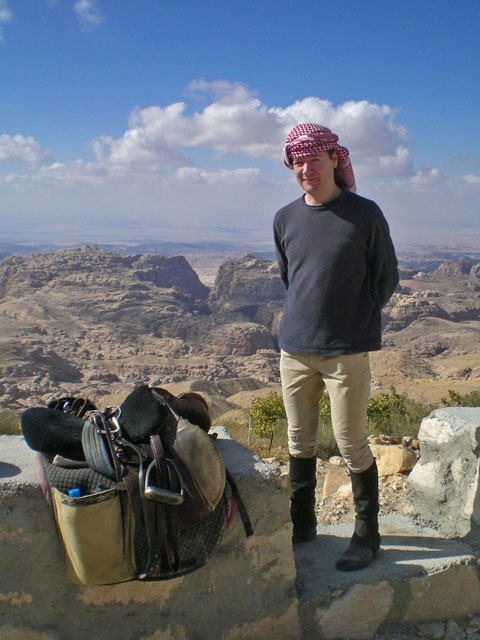
The horses also loved their nosebags. Ann’s starting horse, Nabi, was definitely a grumpier character than Rania, although he was quite calm in most other ways. (We swapped horses after a couple of days.)
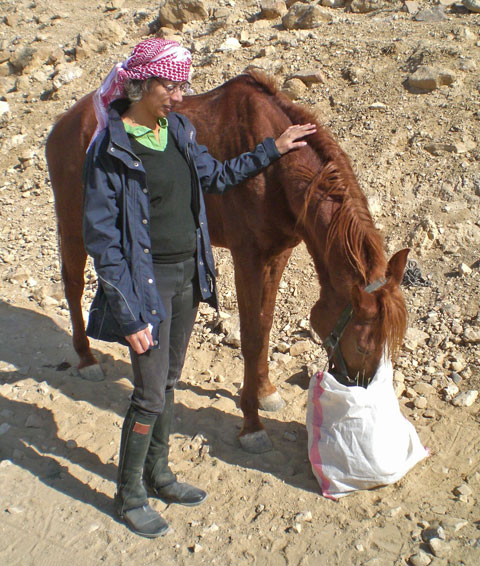
The views across the mountains were quite spectacular. The sun was warm but the air had a bit of a bite to it, which actually suits me very well. I could also see it’s better to stay covered up, even in the sun – not because it was so strong (although it was strong enough for pasty white folk like me) but it actually felt cooler to stay covered. The evenings were a bit on the chill side it has to be said, but with a fire and a couple of layers on we were fine.
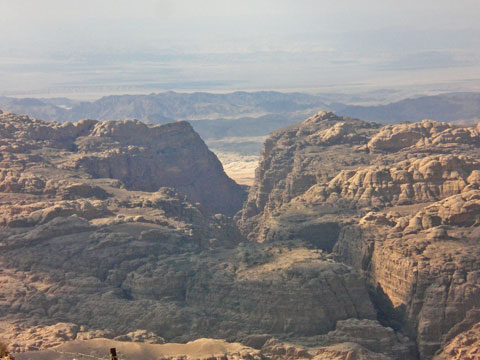
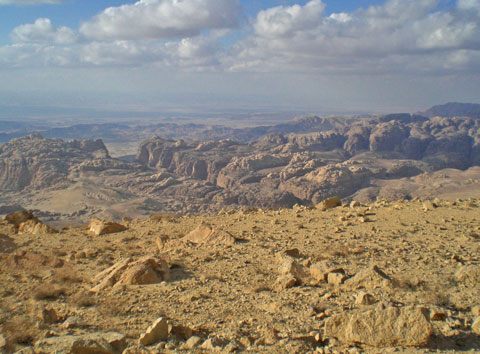
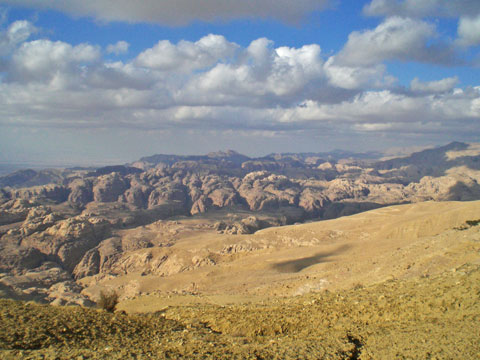
Rami, the stable owner, also owned six dogs. This one surprised him by going with the leading group and then following us for the entire six days.
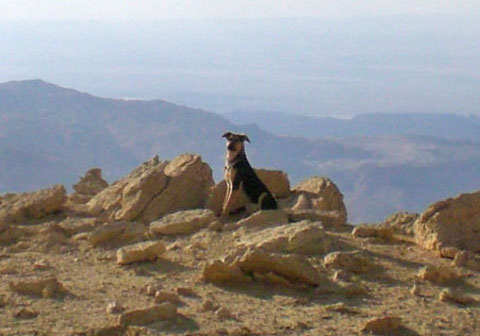
Our first evening’s camp. Tents were optional and although I didn’t mind the idea of sleeping under the stars, I knew the excellent sleeping bags we’d borrowed were best if you didn’t wear clothes inside and so staying inside the tent seemed the right option; it took me 15 minutes to get undressed in tent as it was. We were early to bed (before 9) and rose as soon as the sun hit the tents in any case.
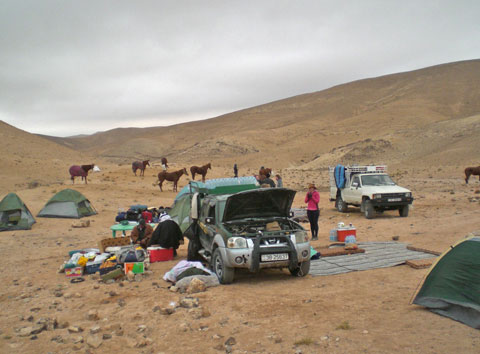
Ann riding her horse, Nabi.
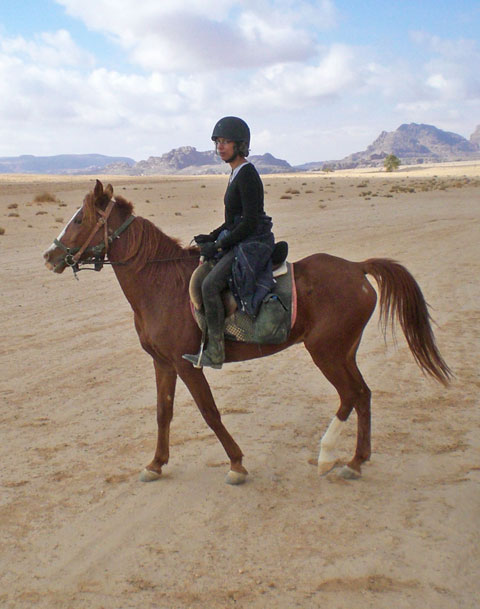
The same, but with dog accompaniment.
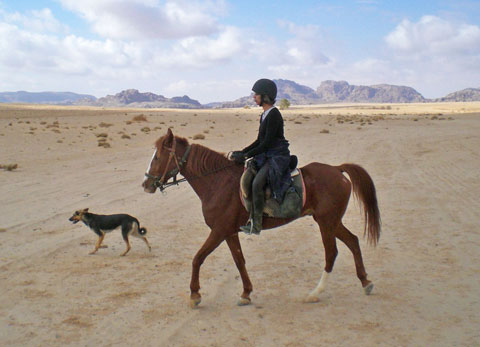
Sarah from Far and Ride was on the tour and hard at work here.
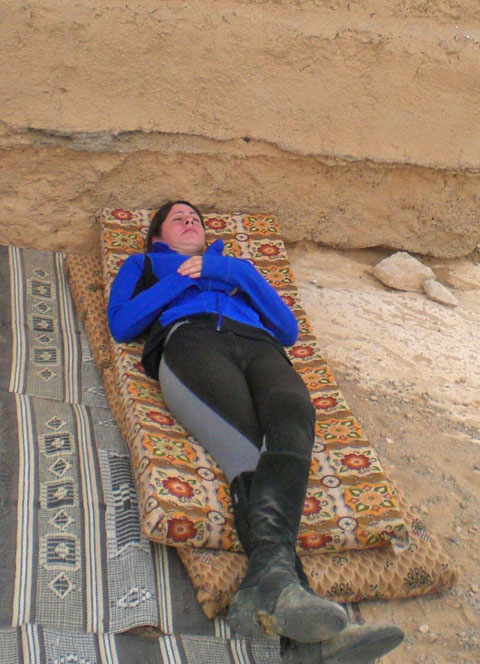
The horses had quite a bit more life in them than the ones we’re used to, and that was absolutely fine by me. Nabi was an endurance specialist and was in training for a 120km ride just a few days after our trip – something that he was expected to do in around six hours.
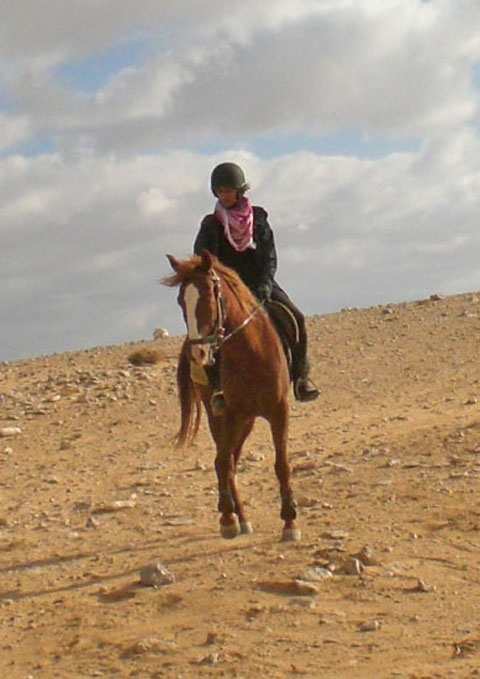
As we descended from the mountains the terrain became more recongisable as a desert.
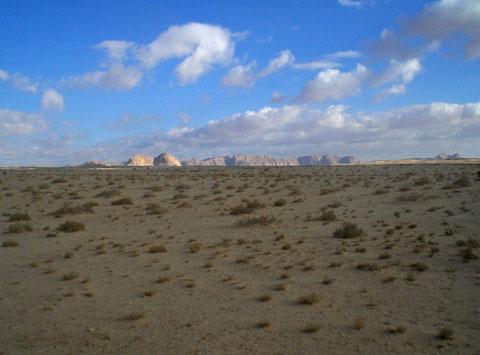
Mohamed, our other guide, on a horse that would never walk anywhere but would pretty much canter on the spot. He also tended to dress as a bandit.
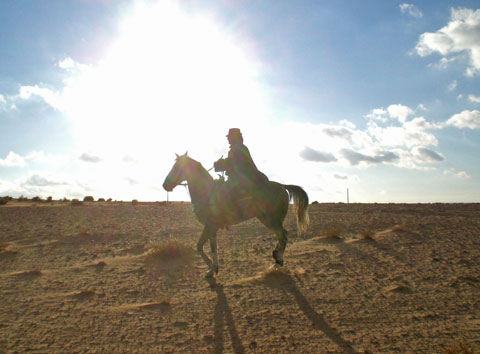
Ann on Nabi. We were in the Wadi Rum here, but outside the protected area – hence the electricity pylons in the distance.
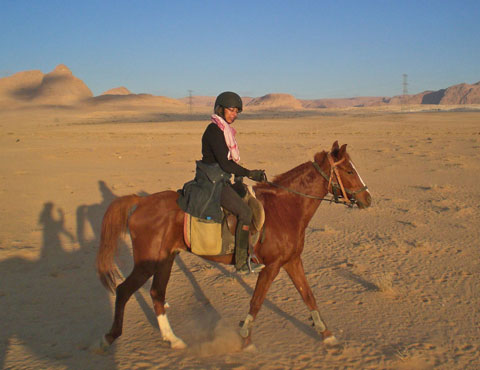
Me on my horse for the first couple of days, called Rania (or at least I think that’s how it’s spelt).
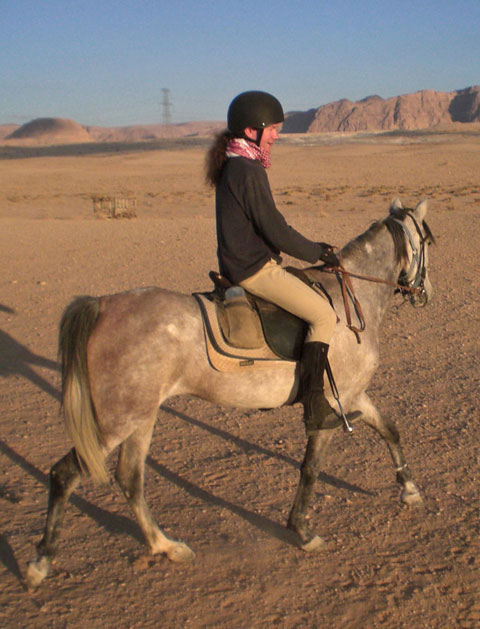
The desert sunsets were also pretty spectacular.
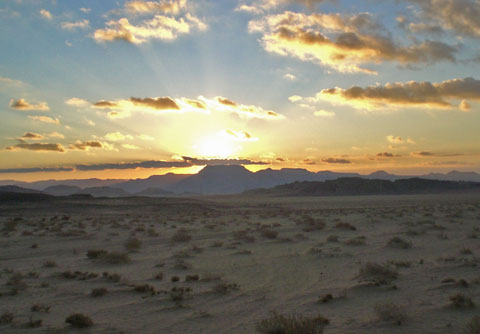
The view from another of our evening camp spots.
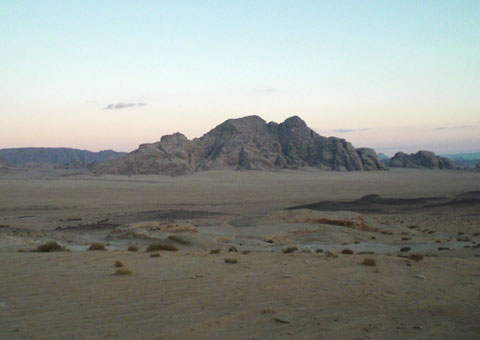
Ann with fellow travellers Sarah and Emma, also from the UK.
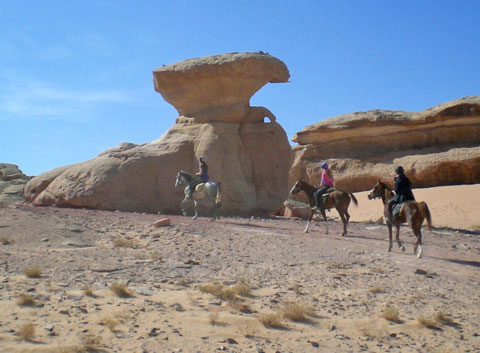
It wasn’t just Petra that was made of butter-like rock. This rock was known for being mushroom-shaped. Mmmmm… buttery mushrooms….
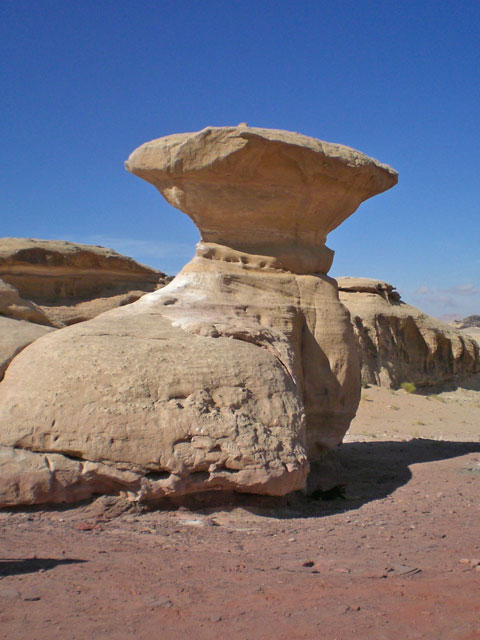
Emma (left) and Sarah (right), raring to go… kind of.
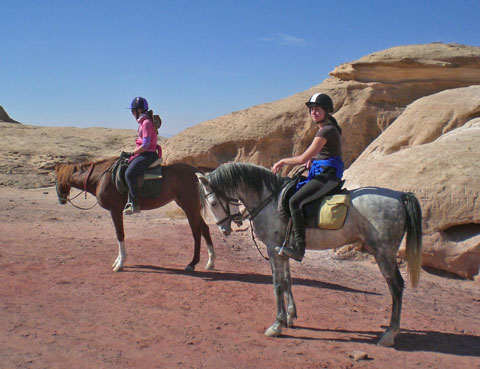
Some more dramatic rock formations. I never got tired of looking at them.
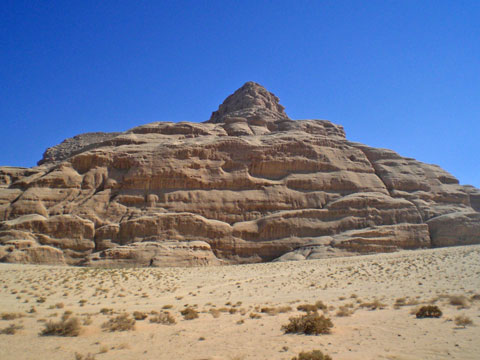
We were encouraged to have solo cantering runs, where Rami would ride off to a point and then one-by-one we’d canter to him at whatever speed we felt comfortable. Initially I was happy just to get there as it was by far the longest continuous canter I’d ever done, and others had pure rocket-propelled Arabic horses and covered the distance at a gallop. Being able to take it as you wanted worked really well and I certainly picked up the speed over the week and now feel comfortable going full-whack on horseback.
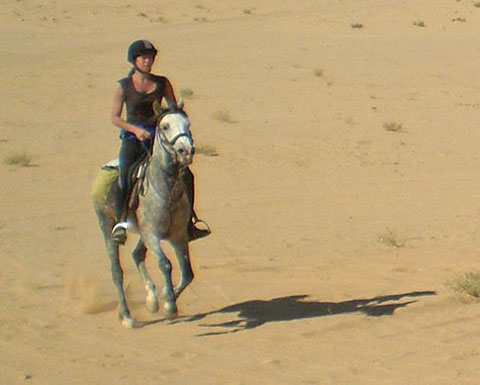
Another natural rock formation: a stone arch.
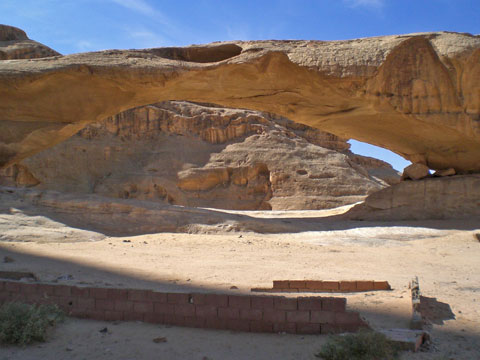
More desert.
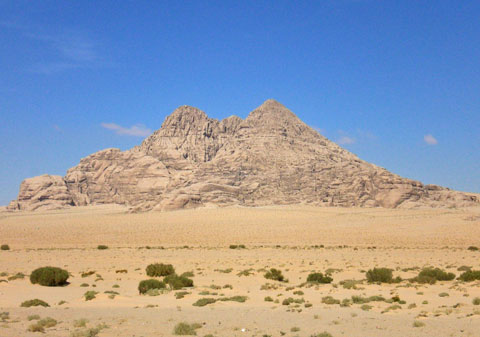
Yes, even in November the sky is very blue in Jordan. I had to take a photo just to prove it.
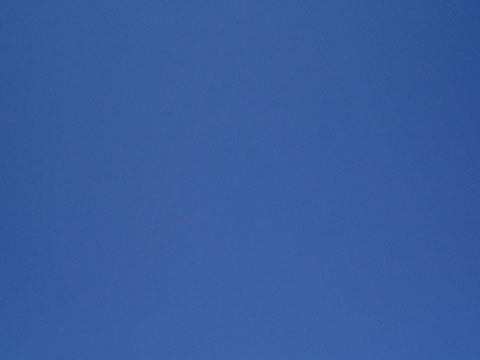
Ann riding Rania after our switcheroo.
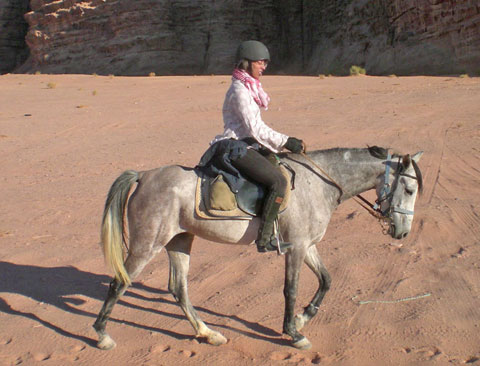
Dramatic cliffs that enveloped another of our camps.
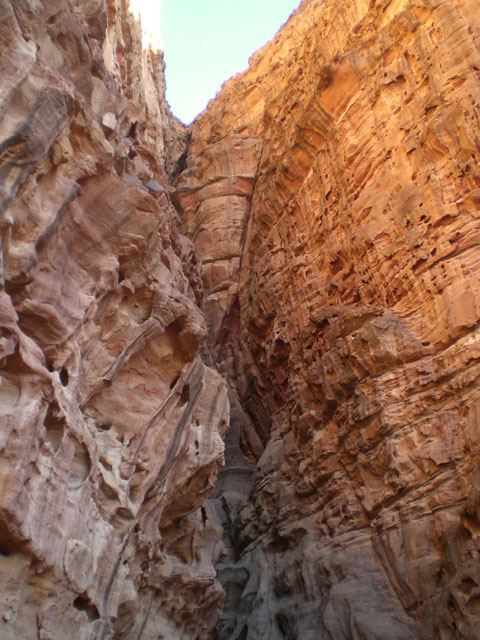
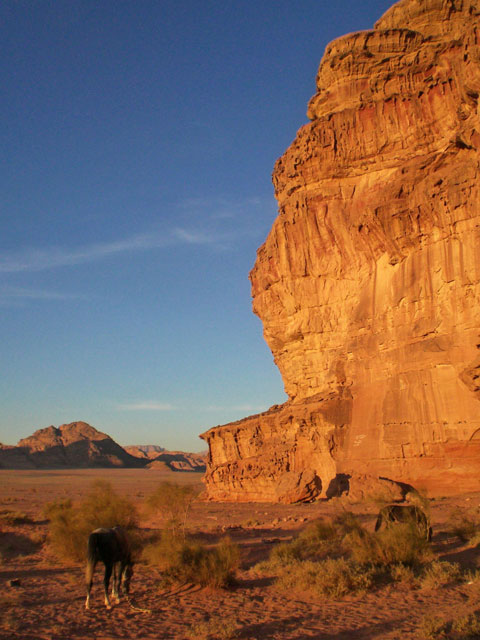
We were given headscarfs by Rami, which proved to be remarkably useful. I think almost everyone wore theirs at one point or another either as a neck scarf or, as demonstrated by Ann here, tied in a semi-Jordanian fashion.
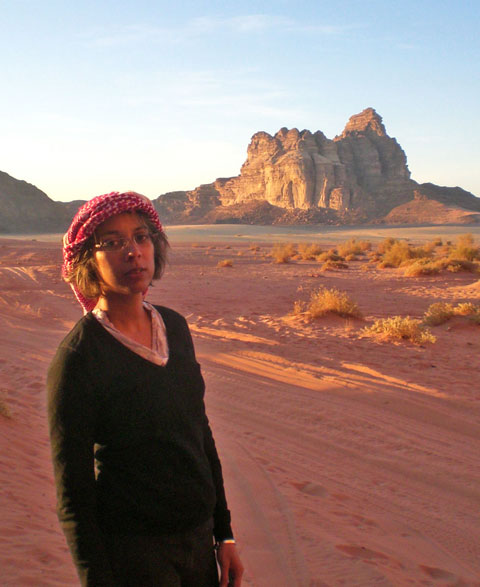
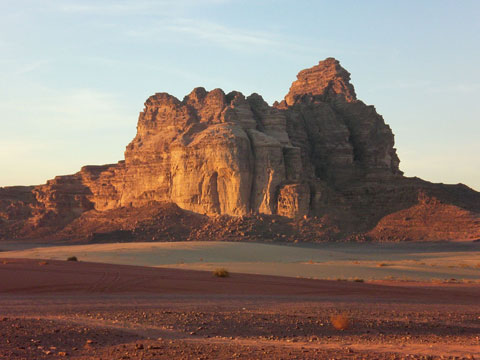
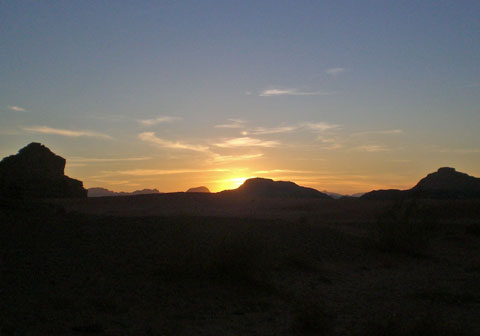
One evening we spotted a flock of birds quite high up. I’ve no idea what they were or where they were going but I’m guessing by the formation there was some migrating going on. They may have been geese of some kind as they seemed fairly large.
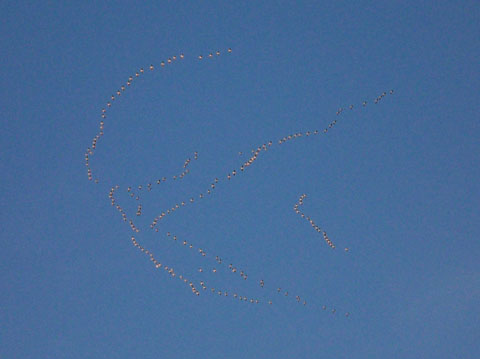
As we headed deeper into Wadi Rum it started to look even more desert-like, complete with sand dunes.
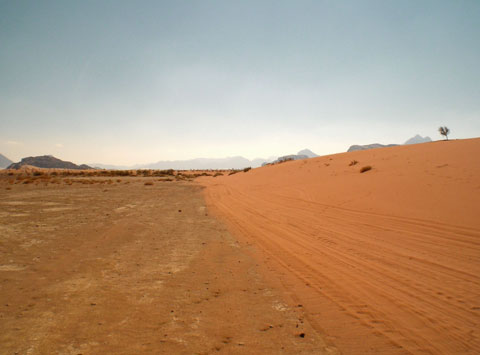
Sarah’s horse was always chewing its bit, unless she gave it a foot to try to bite.
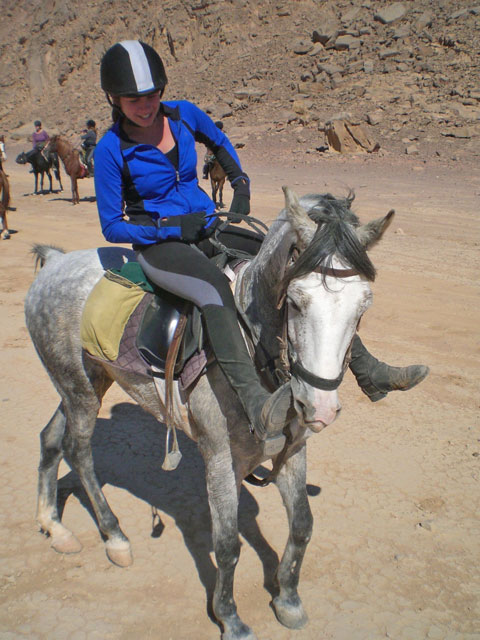
We stopped for lunch one day at what must be called an oasis on the edge of a town, complete with a small water reservoir and numerous leaky irrigation pipes. And where there was water, there was greenery and creatures including birds, plants, hornets (or just giant wasps) and dragonfly.
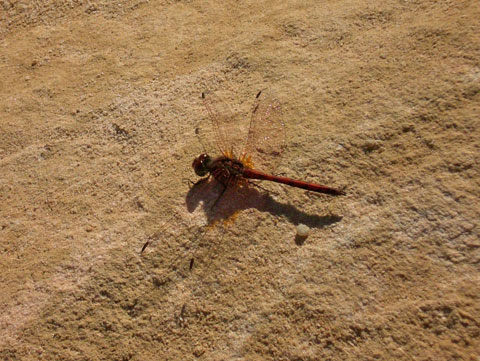
Just one of the many small herds of camels we saw in the desert.
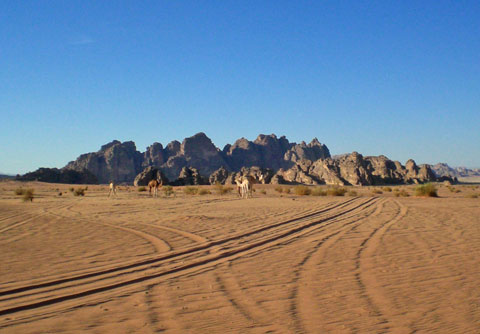
More dramatic rocks.
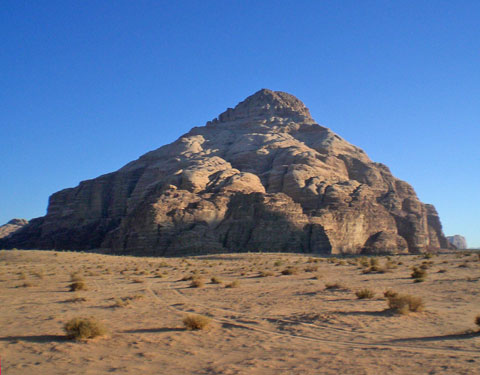
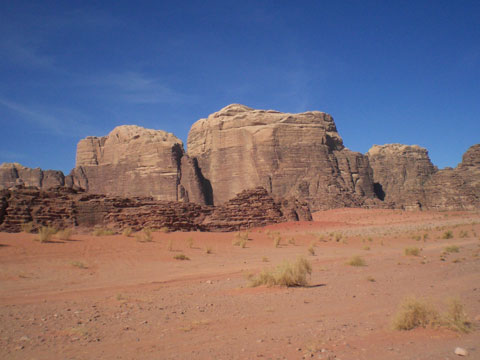
Everyone ends up drawing what they can see, and the Bedouins had been doodling camels into the rocks for a long time.
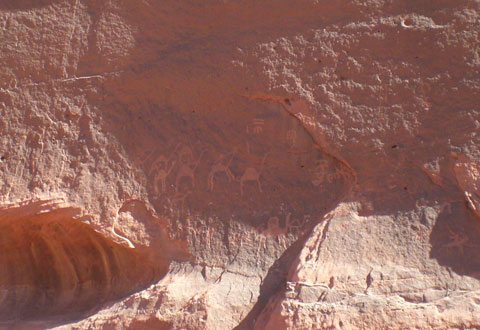
One of the steepest dunes seemingly formed by wind pushing sand up from the rocky desert floor from both directions.
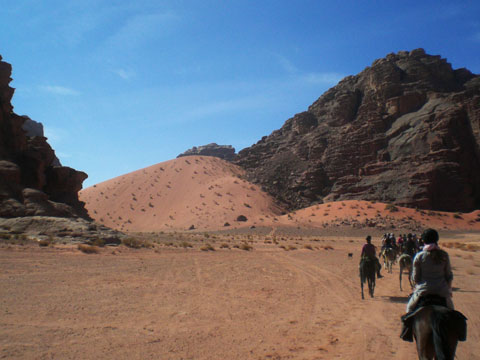
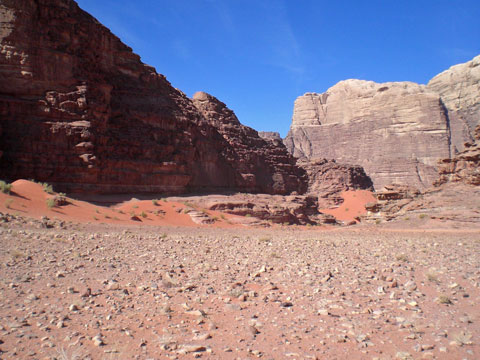
There were also some permanent camps inside Wadi Rum, and this one even looked like it might have hot water – something we hadn’t felt for a few days by this point. We didn’t break in, but it was tempting.
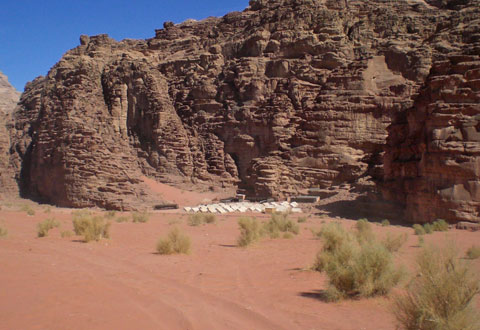
Ann on Rania with more of our group around. We were a slightly-too-large group and most of the time we split into two rides of about eight or nine each, but for this section we rode as one.
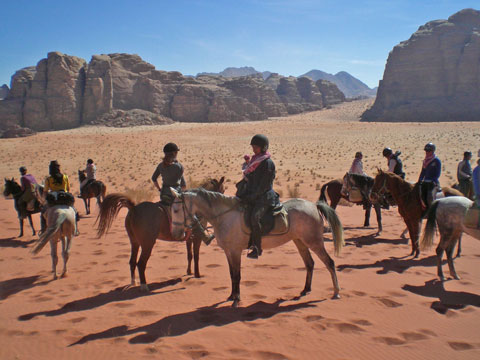
Lawrence of Arabia’s house. Not as impressive as one might have hoped, but I suppose we had to see it while we were in the area. On the whole, the desert experience itself was much more impressive than any of the tourist sights we saw.
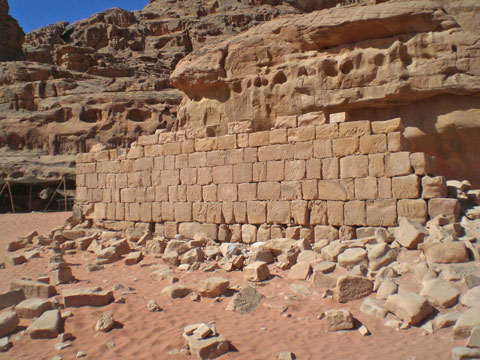
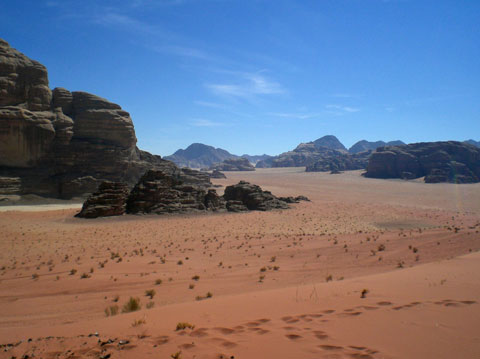
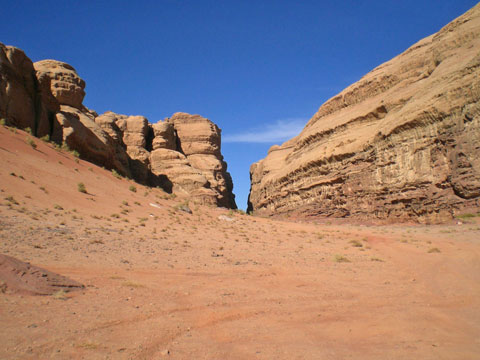
Ann did a fair amount of cantering too.
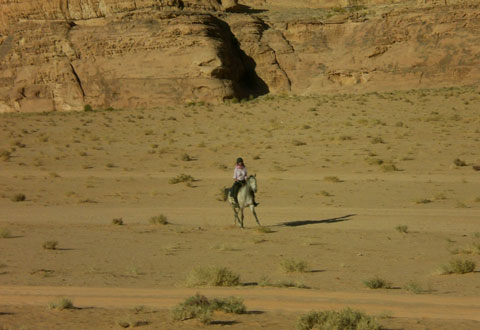
Rami had a particularly powerful-looking horse – a mare which Sarah rode for the last day. It was interesting to watch how he handled the very headstrong horses and that, in contrast to the controlling way we are taught at the riding school, often he would “give in” and let the horse burn some energy with a run and then bring it back. Obviously that’s more practical in the expanse of the desert than, say, the bridle paths of England, but it showed just how much the horses needed to release some energy every now and then.
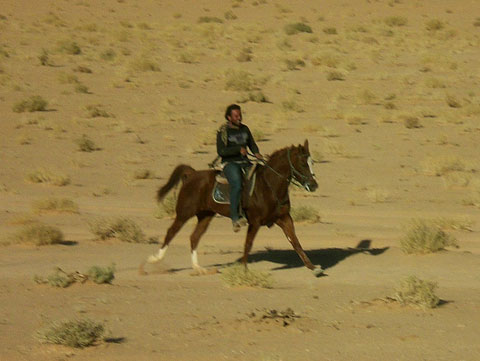
Another of the famous stone bridges. This one you could walk across, although we didn’t have time to hang around.
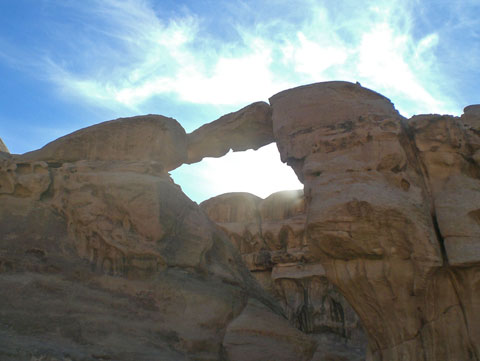
As ever, the scenery itself was the most impressive thing.
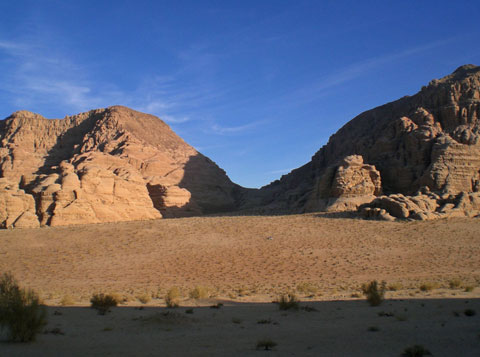
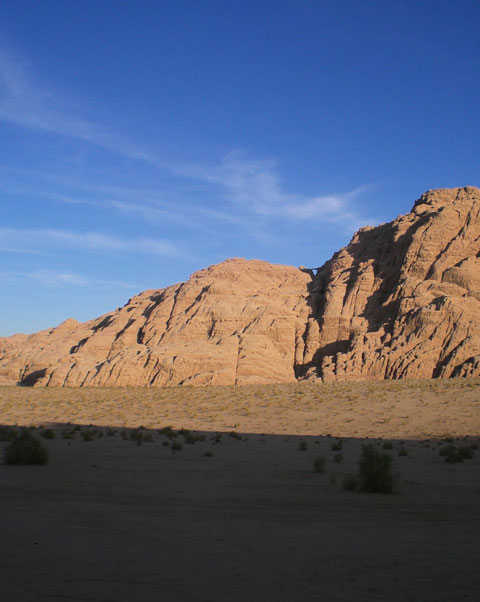
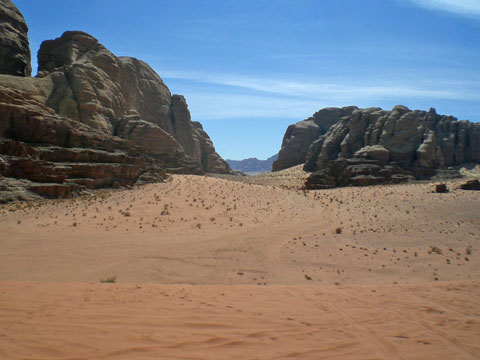
There were some things growing in the desert and a few stones around a flower marked out a back garden for our tent one night.
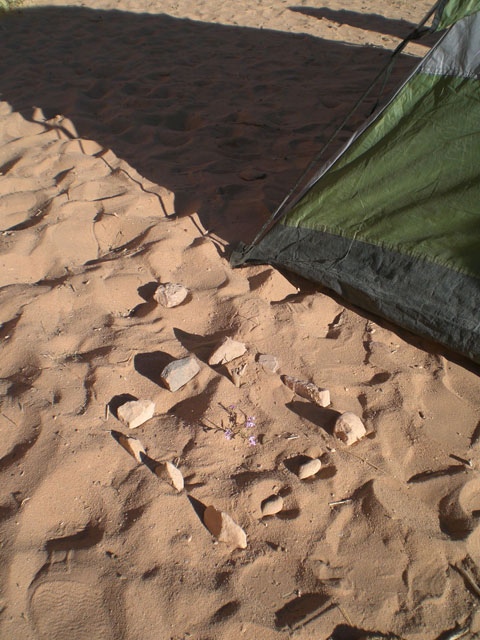
The four Brits. From left to right: Emma, Ann, Sarah and me.
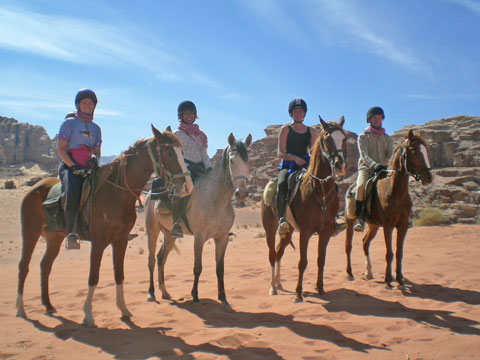
Another natural bridge/arch.
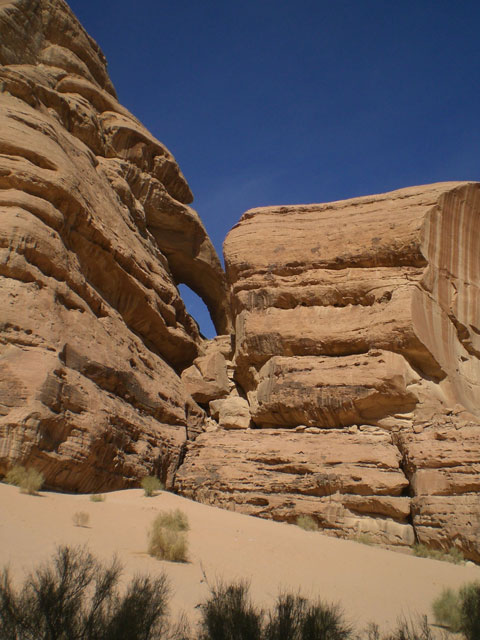
The dog kept up the whole time, even with our extended periods of trotting and cantering, but was always looking for a place to fall asleep in the half-shade.
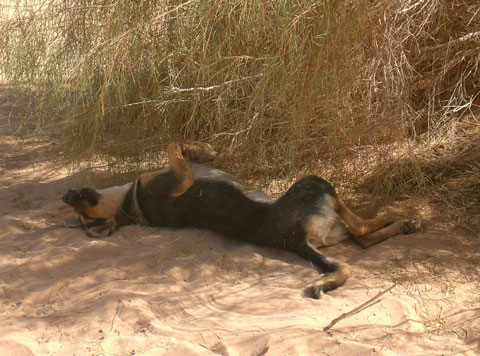
A final sunset before we set off for an afternoon at the Dead Sea.
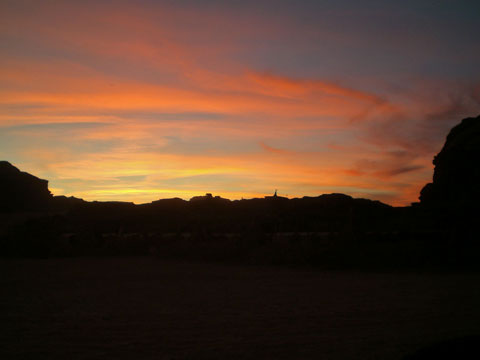
Night 8: The Oasis Desert Camp
We didn’t camp after our last night’s ride but instead stayed in the Oasis Desert Camp, which is one of the closest places you can stay to the protected part of Wadi Rum and still have access to facilities like running water. It was a slightly strange experience and, although the showers were in an abysmal state and barely dispensed any water, and that which it did was warm at best, the relative cleanliness we felt after one poor shower was so good that we were grateful for it. It also puts into perspective the difference in expectations of Western tourists versus Jordanian ones, who I think felt very well-served by the facilities in the camp. After almost a week in the desert our perspectives were also changed as the Oasis Desert Camp, which frankly looked to be a complete tip by the videos and photos on the website, really felt like a refreshing oasis by this point.
We also said goodbye to our horses. They’d served us well for the six days and covered something like a hundred miles or so with us on their backs without breaking into a sweat. It’s going to be hard to recreate the feeling of instant speed on other horses; a bit like going back to a moped after riding a superbike.
Day 9: The Dead Sea
We drove to the Marriot hotel on the Dead Sea, of which I took no photos whatsoever, and I discovered that even I float if the water is a 30% concentration saline solution. It was short-lived entertainment as the salty water is too irritating to stay in for long, but “floating in the Dead Sea” is a box to tick at least. The hotel was slightly incongruous for our group, given that none of us really showed much interest in the trappings of five star “luxury”, but it turned out to be quite a good thing to do as a group wind-down. Also, it had showers, and despite the guilt of using what was probably the annual supply of water for the regular Jordanian it was great to feel clean again.
We hit the bar at happy hour. I’d had virtually no alchohol for the past week, which I think might be the longest I’ve gone for about a dozen years or so, and the first beers were very welcome indeed. A soft bed also seemed like it should feel good, but somehow I think most of us had the worst night’s sleep we’d had for quite a few days. Maybe it was the 5:30am ride to the airport, and then back to Heathrow, that stopped us from sleeping well.
Things I Learnt
- Galloping on a horse is fun
- When the air is dry, going without a shower for six days isn’t as bad as you’d think
- Sand didn’t get in our food, which was a surprise
- Jordanian people really don’t have much water
- There’s much more to look at in the desert than I’d have expected
- Arabic horses are a bit mental in the head, but in a good way (mostly)
2 Replies to “Horse Riding in Jordan”
Dear Carl,
What a great blogg you wrote! It really captures the trip well. Photo’s are great as well. I might “steal” some to add to my own photocollection. I have the one nice picture of you and Ann in the moonlight. I’ll send it to you if you sent me you mail address.
Say hai to Ann for me. Enjoy your riding in England and who knows we meet again.
Warm regards
Yvette
Amazing photos Karl. You are a man of many talents.